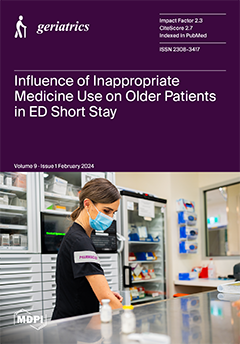Background: Patients with neurodegenerative diseases who live in remote areas often have limited access to specialized healthcare, and telemedicine represents a useful solution. The aim of this study was to investigate the perceptions toward the use of a specialized-tertiary telemedicine service of patients
[...] Read more.
Background: Patients with neurodegenerative diseases who live in remote areas often have limited access to specialized healthcare, and telemedicine represents a useful solution. The aim of this study was to investigate the perceptions toward the use of a specialized-tertiary telemedicine service of patients with cognitive and movement disorders, caregivers, and local healthcare professionals (HPs) in the Aegean Islands. Methods: Data were derived from the “Specialized Outpatient Clinic of Memory, Dementia and Parkinson’s disease through the National Telemedicine Network”, March 2021–March 2023. The survey included 10 questions (5-point Likert scale). Results: We received 64 questionnaires (25 patients, 18 caregivers, 21 HPs). Most participants positively perceived all aspects of telemedicine, including comfort (mean ± standard deviation: patients 4.5 ± 0.9, caregivers: 4.8 ± 0.5, HPs: 4.6 ± 0.7), access to specialized care (4.7 ± 0.6, 4.7 ± 0.5, 4.9 ± 0.4), number of transportations (4.6 ± 0.8, 4.6 ± 0.9, 4.8 ± 0.5), adequacy of follow-up (4.6 ± 0.7, 4.4 ± 0.8, 4.2 ± 0.7), future telemedicine selection (4.8 ± 0.4, 4.8 ± 0.4, 4.6 ± 0.6), perceived reliable medical assessment (4.7 ± 0.5, 4.6 ± 0.6, 4.3 ± 0.6), information delivery (4.7 ± 0.6, 4.6 ± 0.5, 4.4 ± 0.9), health status improvement (4.6 ± 0.7, 4.6 ± 0.6, 4.0 ± 0.7), cost (4.6 ± 1, 4.6 ± 1, 5.0 ± 0.2), and general satisfaction (4.8 ± 0.4, 4.7 ± 0.5, 4.5 ± 0.6). The commonest recommendations were more frequent visits, medical specialties, and dissemination of information. Conclusions: The positive perception of participants highlights the value of telemedicine for specialized healthcare for neurodegenerative disorders, especially in remote areas.
Full article






